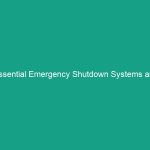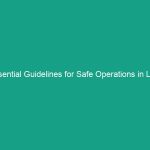Introduction
Good morning team! Today, we’re diving into an essential topic that affects not just our workplace but also our health and the Environment: Essential Spill Response Guidelines. Understanding these guidelines is crucial for maintaining a safe working environment and ensuring that we can effectively respond to spills without jeopardizing our Safety or the Safety of our colleagues.
With the potential for hazardous materials to cause significant harm, both to people and the environment, it’s important to be prepared. Let’s explore why knowing how to respond to spills is vital and discuss ways to mitigate these risks effectively.
Understanding Essential Spill Response Guidelines
Essential Spill Response Guidelines outline the Procedures and practices that employees should follow when a spill occurs. These guidelines are critical for minimizing Hazards and ensuring that spills are managed in a safe and efficient manner.
Spills can happen in various forms, whether it’s a chemical, oil, or other hazardous materials. The impact of a spill can disrupt operations, pose health risks, and lead to costly clean-up efforts. Unfortunately, many employees hold misconceptions about spill response, thinking, for instance, that they can simply ignore small spills or that clean-up is someone else’s responsibility.
In reality, every spill, no matter how small, must be treated seriously. Understanding these guidelines is crucial not only for compliance but also for protecting you and your coworkers.
Key Hazards, Risks, and Safety Considerations
When addressing spills, it’s essential to recognize the specific hazards and risks involved. Some common hazards include:
- Slips and Falls: Spills can create slippery surfaces, increasing the risk of falls.
- Chemical Exposure: Exposure to hazardous substances can lead to serious health issues.
- Environmental Damage: Spills can contaminate soil and water, leading to long-lasting Effects on the ecosystem.
- Fire Hazards: Certain substances can be flammable, posing a significant fire risk.
Ignoring these hazards can lead to severe consequences, including injuries, legal liabilities, and environmental fines. Therefore, it is paramount to understand these risks thoroughly and to take proactive measures.
Best Practices, Procedures, & Actionable Advice
To effectively manage spills, follow these Best Practices and procedures:
1. Immediate Response Steps
- Assess the Situation: Quickly evaluate the spill to determine its size, type, and risk.
- Alert Others: Notify coworkers in the vicinity and activate the spill response team if necessary.
- Evacuate if Necessary: If the spill poses an immediate danger, evacuate the area.
2. Containment Measures
- Use Absorbent Materials: Deploy absorbent pads, booms, or other materials to contain the spill.
- Seal Off the Area: Use cones or tape to prevent unauthorized access to the spill area.
3. Clean-Up Procedures
- Follow Safety Protocols: Wear appropriate Personal Protective Equipment (PPE) such as gloves, goggles, and masks.
- Dispose of Waste Properly: Collect contaminated materials and dispose of them according to your company’s waste disposal policies.
4. Report the Incident
Document the spill, including the response actions taken, and report it to your supervisor or safety officer. This helps in understanding the incident and improving future response strategies.
Real-Life Example
A recent incident involved a small spill of oil in the Maintenance area. The crew quickly assessed the situation, contained the spill with absorbent pads, and reported it. Thanks to their swift action, the spill was managed effectively, preventing any slips or environmental contamination.
Regulations, Standards, and Compliance
Understanding the Regulations that govern spill response is critical for compliance and safety. Key regulations include:
- OSHA (Occupational Safety and Health Administration): Provides guidelines on hazardous material handling.
- EPA (Environmental Protection Agency): Sets Standards for environmental protection, including spill Prevention and reporting.
- Company-Specific Policies: Ensure familiarity with your organization’s spill response plan, which may include additional protocols and Training requirements.
Compliance with these regulations not only protects you but also safeguards the environment and the company’s reputation.
Employee Engagement & Discussion
Let’s open the floor for discussion. Here are a few questions to consider:
- What safety challenges have you encountered related to spills?
- Have you ever felt unsure about how to respond to a spill? What can we do to improve our response readiness?
- Do you have any suggestions for enhancing our spill response procedures?
Your input is valuable, and sharing experiences can help us all improve our safety practices.
Conclusion & Key Takeaways
In conclusion, understanding and following Essential Spill Response Guidelines is crucial for ensuring Workplace Safety and environmental protection. Remember the key points:
- Assess and contain spills immediately.
- Follow safe clean-up procedures and use proper PPE.
- Report all incidents for further evaluation and improvement.
Let’s all commit to prioritizing safety and being proactive in our spill response efforts. Thank you for your attention and for your commitment to maintaining a safe work environment.


